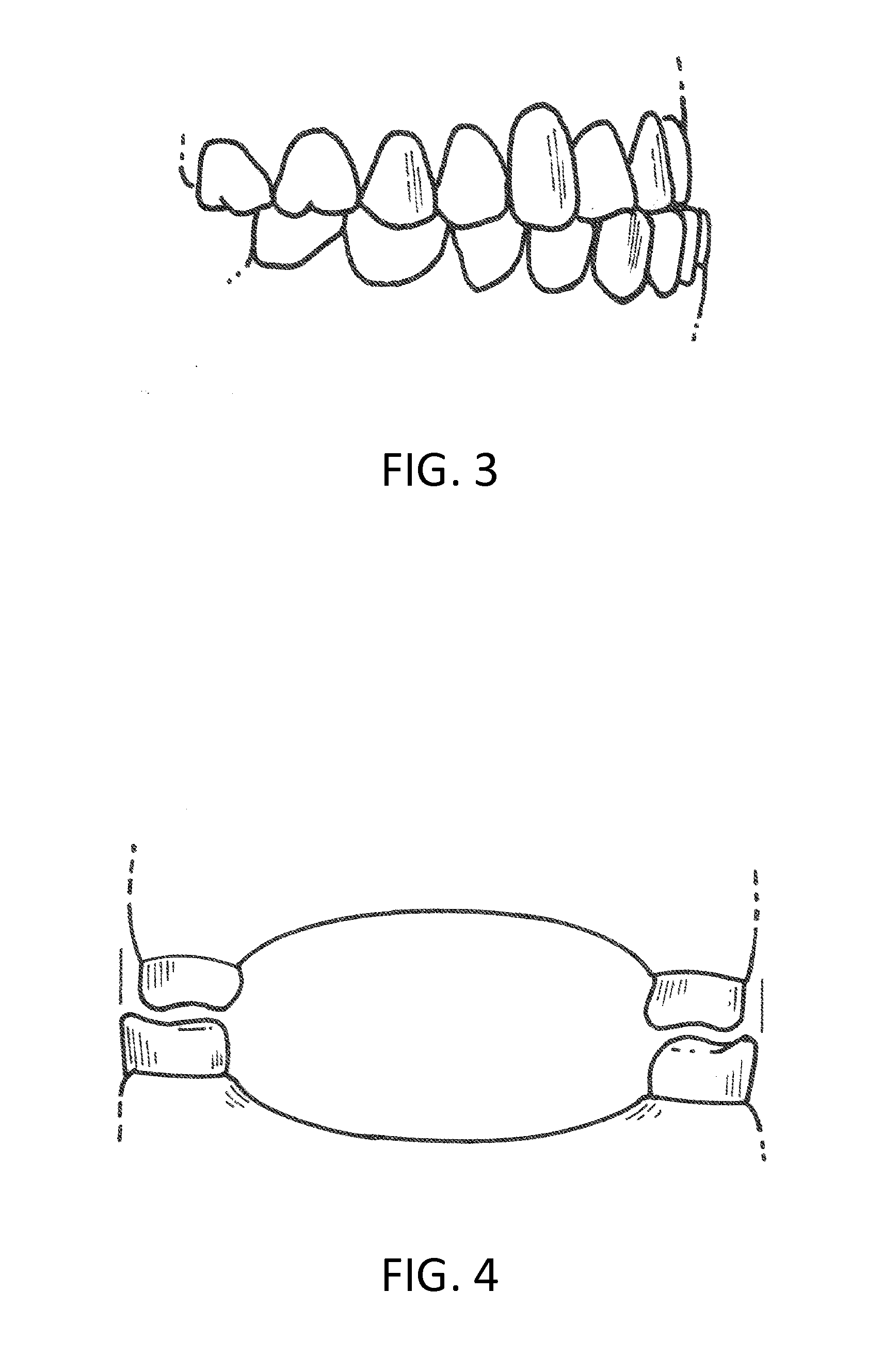Orthodontic Appliance
a technology for orthodontic appliances and teeth, applied in dentistry, medical science, dental tools, etc., can solve the problems of complex surgery, limited application, and further limitation of application, and achieve the effect of reducing the profile of the web, sufficient dimensional tolerance, and reducing the thickness of the end profil
- Summary
- Abstract
- Description
- Claims
- Application Information
AI Technical Summary
Benefits of technology
Problems solved by technology
Method used
Image
Examples
Embodiment Construction
[0143]An orthodontic appliance for treating inter alia a Class 3 malocclusion in accordance with this invention may manifest itself in a variety of forms. It will be convenient to hereinafter describe at least one embodiment of the invention in detail with reference to the accompanying drawings. The purpose of providing this detailed description is to instruct persons having an interest in the subject matter of the invention how to carry the invention into practical effect. However it is to be clearly understood that the specific nature of this detailed description does not supersede the generality of the preceding broad description. In the drawings:
[0144]FIG. 1 is a schematic side view of a dental model showing correct dental occlusion;
[0145]FIG. 2 is a schematic rear view of the model of FIG. 1 showing correct dental occlusion;
[0146]FIG. 3 is a schematic side view of a dental model showing a Class 3 malocclusion with the incisor teeth of the lower arch positioned proud of the inci...
PUM
 Login to View More
Login to View More Abstract
Description
Claims
Application Information
 Login to View More
Login to View More - R&D
- Intellectual Property
- Life Sciences
- Materials
- Tech Scout
- Unparalleled Data Quality
- Higher Quality Content
- 60% Fewer Hallucinations
Browse by: Latest US Patents, China's latest patents, Technical Efficacy Thesaurus, Application Domain, Technology Topic, Popular Technical Reports.
© 2025 PatSnap. All rights reserved.Legal|Privacy policy|Modern Slavery Act Transparency Statement|Sitemap|About US| Contact US: help@patsnap.com



